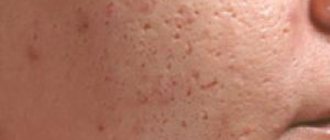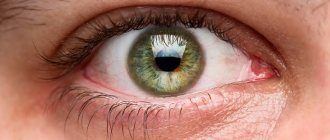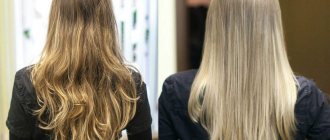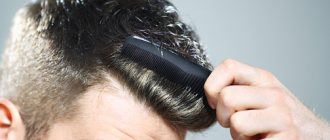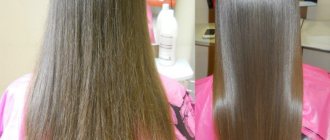There is no woman who would be indifferent to her appearance. Visiting a hairdresser to get your hair done is a common occurrence. But sometimes difficulties arise when it suddenly turns out that one or another form of styling is hampered by short hair on the forehead, which sticks out and does not fit into the overall composition. This is especially noticeable when everything is combed back, without leaving bangs.
Should you be upset about this and how, if necessary, to remove excess hair from your forehead, is discussed in this article.
Scary or not
The presence of short and thin hair on the forehead of women is quite common, and it is very noticeable to others. If you have a calm attitude towards the very fact of their presence, you shouldn’t be upset. You can choose a hairstyle that will hide the growth line at the top of the forehead and completely forget about this problem.
It’s another matter when the short hair that appears on the forehead begins to transform and grow intensively, covering an increasingly larger area. In this case, you should immediately address this problem.
There are many ways to do this - from professional ones, performed by specialists in beauty salons, to folk ones, which can be used at home.
Before deciding what exactly should be done if hair grows on the forehead, you need to visit a cosmetologist who will help remove it, and consult a doctor to determine the cause of this problem.
Why does hair grow on the forehead?
The question of why small hair grows on the forehead has two main answers:
- heredity;
- hormonal changes.
As a rule, women of the East, having dark hair, deal with the problem of hair growth not only on the forehead, but also above the upper lip.
And if earlier this was considered a sign of an imperious character, now, of course, few people are happy, especially among unmarried girls.
The appearance of facial hair can be a consequence of a hormonal surge.
In this case, the first thing to do is consult a doctor. Did you know? Hair growth depends on the functioning of the gonads, which produce hormones. If male hormones predominate, then facial and body hair increases significantly.
Hairline
This line is individual for each person, but there are several basic forms:
- rectangle - predominates in men and represents a clear horizontal line in the upper part of the forehead;
- in the shape of the letter M - the hair grows in a triangle, creating a small pointed protrusion with bald patches above the temporal region;
- arch - a smooth curved line emphasizing the height of the forehead;
- heart-shaped - resembles two arches connected by the edges in the center;
- three-arch form - is a curved row consisting of three arches connected together.
Some fashionistas strive to achieve one of these shapes by removing the fuzzy border.
Sometimes this is easy to do, but it also happens that implementing your idea will require a lot of time, effort and money spent. Important! Before correction, you should have a clear idea of what result should be achieved. Remove all excess - or, conversely, make longer and thicker strands in certain areas.
Should I delete
Removing excess hair on the forehead is a purely personal matter for each person.
It all depends on the character, type of activity, sensitivity to the opinions of others.
Among women
Most of them are inclined to radical solutions, but perhaps simpler actions will be enough:
- form bangs that can cover problem areas;
- release curls or strands in places that should be covered;
- comb your hair in a certain way;
- do the styling in the desired direction and fix it with varnish.
After all, in a young girl or teenager, this may be a temporary phenomenon.
In men
The presence of excess hair is never particularly painful for them.
A man will most likely have a question about how to grow hair on his forehead, because the stronger sex is prone to baldness. Did you know? Women are not prone to baldness, since the roots of their hair are planted 2 mm deeper than those of men.
In children
There are no problems at all, because babies grow, develop, change, so today's problems can disappear tomorrow on their own.
In addition, from infancy, a child has certain areas covered with soft fluff, which disappears forever over time.
Choose accessories
Use headbands or headbands, hats, caps and other headwear that will help hold growing hairs for a long time and prevent them from frizz. Experiment with accessories, for example, by learning how to tie a silk scarf in an unusual way.
How to get rid of short hair on forehead
When thinking about how to get rid of unwanted hair on your forehead, the first thing that comes to mind is to pluck or shave. But these are not the best options.
At home
When deciding how to hide or remove small hair on the forehead without resorting to the services of specialists, you can consider the following options:
- Carry out bioepilation. A special wax or resin is used. When heated, they are applied to the problem area and covered on top with a sheet of special paper. After everything has cooled down, you should tear off the sheet with a quick and sharp movement.
- Lighten with hydrogen peroxide. A 3% or 6% solution will be required; It is used every second day to treat the area that needs to be lightened. With prolonged use of this method, the complete disappearance of unnecessary vegetation is possible.
- Treat with an alcohol solution (medicinal alcohol 35 g, ammonia 5 g, castor oil 5 g). Lubricate twice a day.
- Rub with nut shells. Walnut or pine nut shells are crushed and diluted with water to form a paste. Rub problem areas 3-4 times a day.
- Apply an infusion of nettle seeds. Add forty grams of powdered seeds to one hundred grams of vegetable oil and leave in a dark place for about two months. After straining, use daily as a lubricant 2-3 times a day.
- Lubricate daily with freshly squeezed juice of green (unripe) wild grapes.
- Use a soda solution (a teaspoon of soda per glass of boiling water). A cotton swab is moistened in the solution, which is applied to the desired area and remains in effect throughout the night.
Visit to a cosmetologist
This is the wisest decision, especially if the problem area has a significant area.
A good specialist, with extensive experience, will be able to accurately determine the reason why hair has grown on the forehead and suggest how to most effectively hide or remove unwanted hair in each specific case.
Important! Bleaching, which can be done independently and at home, will be safer and more effective if this procedure is performed by a cosmetologist.
How to understand that AGA has begun to manifest itself
AGA type baldness goes through several stages. Stage 1: The front hairline has deepened slightly, and visible bald patches have appeared at the temples. Stage 2: The balding areas extend deeper, but no more than 2 cm. Stage 3: The areas of loss become wider than 2 cm, and the hair begins to thin on the crown. Stage 4: distinct zones of baldness appear - temporal and frontal. Stage 5: the boundaries between zones are erased, the hair continues to thin. AGA can also be accompanied by increased activity of the sebaceous glands of the scalp, which can manifest itself in the form of dandruff and easily dirty hair.
I want to see a trichologist
What will happen and what to do if you shaved the hair on your forehead
If a girl shaved her forehead hair once, she will have to repeat this procedure in the future. There is nothing particularly terrible about this, because most women constantly shave their legs, preferring this method to others, since it is convenient and painless for working with a large area. But in the case of the forehead, it is better to choose another method.
If for some reason this happens, the next step in the fight against problem areas should be a trip to a cosmetologist, and in especially severe cases, to a doctor.
What tests can I take?
If you want to make sure that you have AGA, you will need to undergo a series of laboratory tests and special studies. It will be necessary to do a clinical blood test, blood tests for thyroid hormones, male sex hormones, the level of B and T lymphocytes, as well as syphilis. Among the tests, you will probably be prescribed hair shaft microscopy, flaking microscopy, hair pull test, scalp biopsy followed by immunofluorescence examination and microscopy.
How to remove short hair on forehead forever
It is best to consult a cosmetologist about this, who will professionally tell you how to permanently remove problematic hair growing on the forehead in the wrong place.
TV presenter Victoria Bonya talks about how to correct the shape of the forehead:
Proven methods used in beauty salons are:
- Laser hair removal.
The impact of a laser beam on the follicle, which leads to its destruction without restoration. - Photoepilation.
Under the intense influence of heat and light, follicles are destroyed. A universal, but time-consuming remedy. - Electrolysis.
Under the influence of electric current, each hair is completely destroyed within 30 seconds.
Do these hairs grow faster?
Okay, where did this strange hair come from, we more or less figured it out. But why does it grow so quickly, growing back almost overnight? No magic, the phenomenon of perception is to blame. These hairs grow at the same rate as others, but are unique enough in shade, thickness, and placement that we just think they stand out.
This hair can also grow in a place that we don’t often pay attention to; in the end, we only notice it when it becomes very long.
Other causes of male alopecia
AGA is the most common, but not the only cause of male pattern baldness. In second place is diffuse alopecia, so it also deserves detailed consideration. Diffuse alopecia is often called female pattern baldness because it is the leading cause of hair loss in women. Unlike the male type, the female type is characterized by a uniform loss of vegetation throughout the entire head in fairly large volumes. Hair acquires signs of dystrophy - it becomes thinner, slows down in growth, and then begins to fall out. This type of alopecia is usually caused by external factors: inflammatory skin diseases, severe stress, infectious diseases, chemotherapy, anesthesia, long-term use of antibiotics and other drugs that cause severe side effects. Also, diffuse alopecia is caused by a lack of vitamins and microelements: iron, zinc, chromium, selenium, vitamin B12, protein nutrition. Depending on the identified abnormalities, treatment is prescribed for the primary disease that caused the volume loss. Also, the main treatment is usually combined with local external therapy, which may include the application of special serums to the scalp that nourish the hair follicles and stimulate the growth of new hairs, as well as physical therapy. For oral administration, vitamins C, PP, A, and B vitamins are recommended. Long-term intake of zinc and special dietary supplements are recommended.
Another possible variant of alopecia is patchy or patchy baldness. It is characterized by separate areas of distribution. As a result of alopecia areata, oval or round bald patches with clearly defined edges are formed, and they can be located not only on the head itself, but also on the arms, legs, chest, beard and even eyebrows. Alopecia areata is an autoimmune disease, the triggering factor for the development of which can be completely different processes in the body. Also, this problem can arise against the background of absolute health. Drug treatment is prescribed depending on the circumstances. Various serums are used externally, and physiotherapy is actively used. The effect of treatment in each area occurs no earlier than after 3 months, and in some cases the disease can only recede as a result of long-term complex treatment. If alopecia areata is not accompanied by scarring of the follicles, hair growth can be restored. With a scar form, growth is no longer possible.
I want to see a trichologist
Scarring alopecia occurs as a result of trauma to the scalp and hair follicles, and can also be a consequence of alopecia areata or scalp folliculitis. It is quite rare. This is the most difficult case, amenable to correction, but not complete cure. In the injured area, hair falls out in clumps, and the germination of new ones becomes impossible due to the formed scar tissue. With such a loss, only a specialist can help. Before treating cicatricial alopecia, it is necessary to establish the causes of its occurrence, for which various diagnostics are carried out: scalp biopsy, trichoscopy, phototrichoscopy. Treatment of cicatricial alopecia depends on the stage of development of the disease. At an early stage, drug therapy may be recommended, aimed not at restoring volume, but at preventing further spread of the disease. Transplantation of hair follicles also does not guarantee a lasting result, since atrophied scar tissue has a poor blood supply, which makes it difficult for the transplanted hair follicles to survive and regenerate. In extreme cases, a patient suffering from scarring alopecia may be advised to undergo a scalp transplant.
Tinea capitis (or ringworm) is another cause of male alopecia. Previously it was believed that this disease was characteristic only of children. However, statistics indicate that among adult men this type of dermatomycosis is 15-20% common. The disease affects not only the scalp, but also the mustache and beard area. Ringworm causes painful discomfort and can cause complete baldness even at a young age. The cause of dermatomycosis is a fungus (fungi of the genus Microsporum or Trichophyton). The first signs of this disease are itching, flaking of the scalp, increased hair fragility, inflammation of the hair follicles, local hair loss, local exudate from the skin, the formation of bloody crusts, scales and swelling. In the case of dermatomycosis, antifungal therapy is required as part of a set of measures that the doctor must select.
Pathogenesis
The disease is associated with increased sensitivity of connective tissue cells in follicles to oxidative stress, which arises from the influence of androgens. External and internal factors can contribute to this, but in most cases, androgenetic alopecia in men is caused by a genetic factor, which complicates treatment. The predisposition is inherited in an autosomal dominant or multigenic manner. This means that if the father suffers from baldness, then with a probability of up to 80% the son will also have the pathology. Age, lifestyle, bad habits, stress level, and concomitant diseases also matter.
Androgens are steroid hormones that are produced in the adrenal glands. They are responsible for external signs, increase muscle mass and strength, help reduce the amount of subcutaneous fat, increase libido and cause the development of secondary sexual characteristics. Androgens also help slow hair growth. One of these genes, testosterone, is converted into dihydrotestosterone by the action of an enzyme located there. It is this that has a detrimental effect on the hair follicles.
It is worth emphasizing that androgenetic alopecia in men can develop despite normal hormone levels, so their correction during treatment is not always required.
The disease occurs in several stages:
- follicles are damaged by androgens;
- hair becomes dry, brittle, loses pigmentation and gradually falls out;
- vellus hair appears;
- at the last stage, the follicles are completely overgrown.
Prevention is better than cure
If you start to notice increased hair loss, don't wait until you've lost significant volume. You should not watch this process for a month, two or three. We need to act! Start using topical treatments such as nourishing serums and hair growth activators right away.
Regardless of the cause of volume loss, serums with peptides will help you. They are effective not only for androgenetic alopecia, but also in all other cases. Peptides, being protein molecules with a shortened chain of amino acids, stimulate cell renewal, use the body’s reserve forces, and most importantly, they transfer information and send signals to the cells of the hair follicles to restore: “Live!” and “Multiply!” Peptides improve local blood circulation, improving the supply of oxygen and nutrition to the follicles. Thanks to the vitamins and plant extracts included in the composition, serums directly saturate the hair follicles with all the substances necessary for their work and health. And all this without minoxidil, without hormones and without aggressive preservatives.
Serums are universal and can help men with hair loss in all common cases. Try it! And if after a few months you do not see any improvement, then contact a trichologist.
LEARN MORE ABOUT HAIRFOOD PRODUCTS

